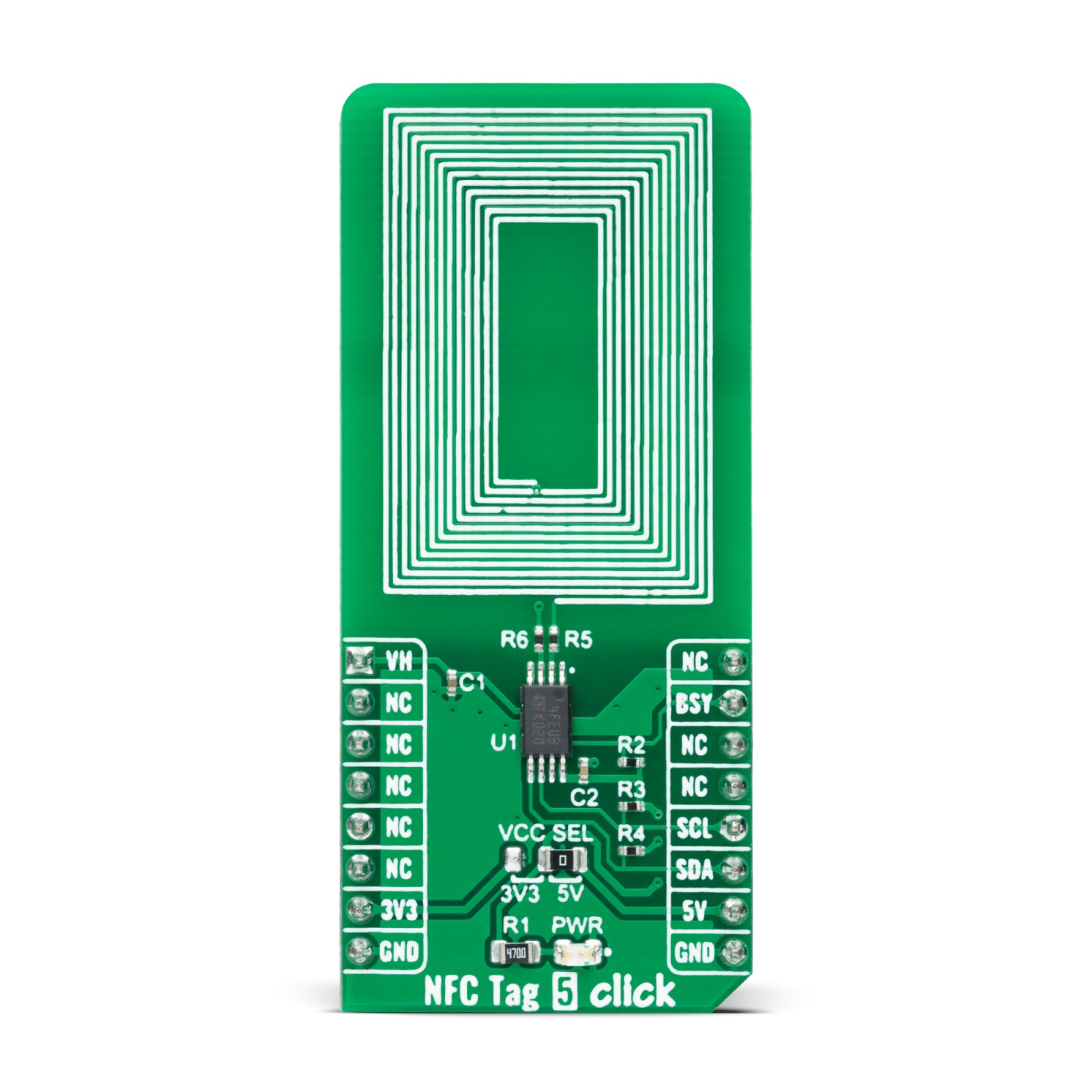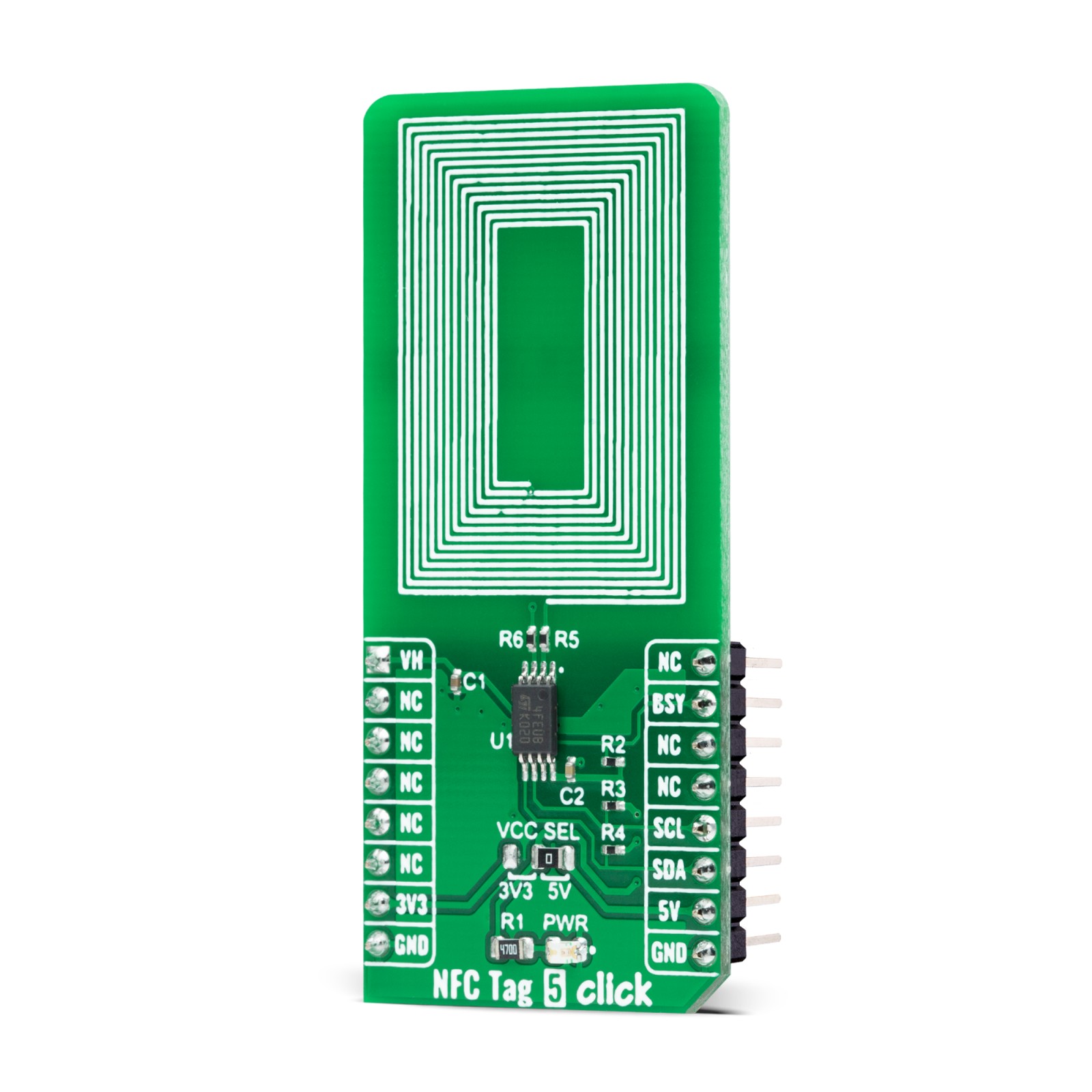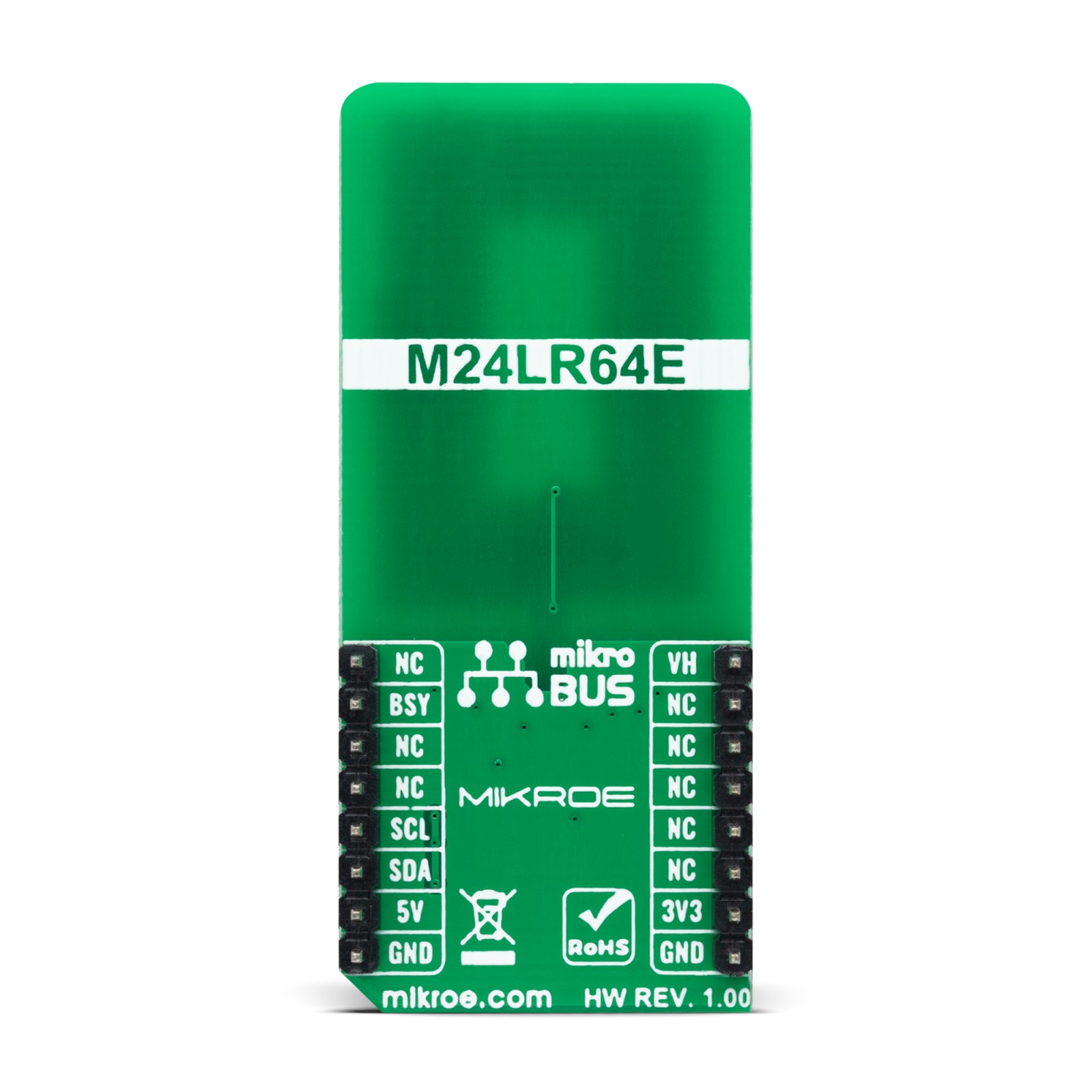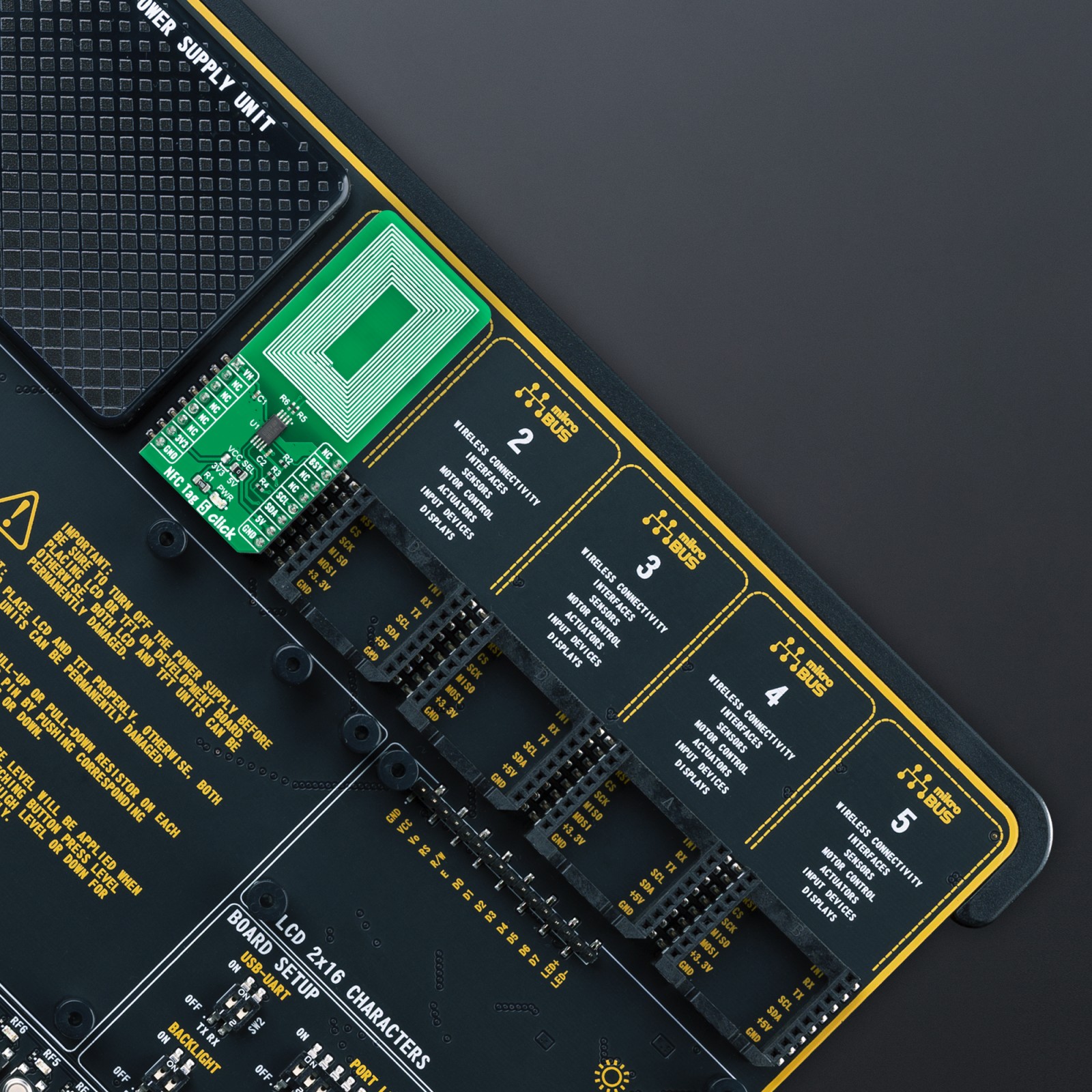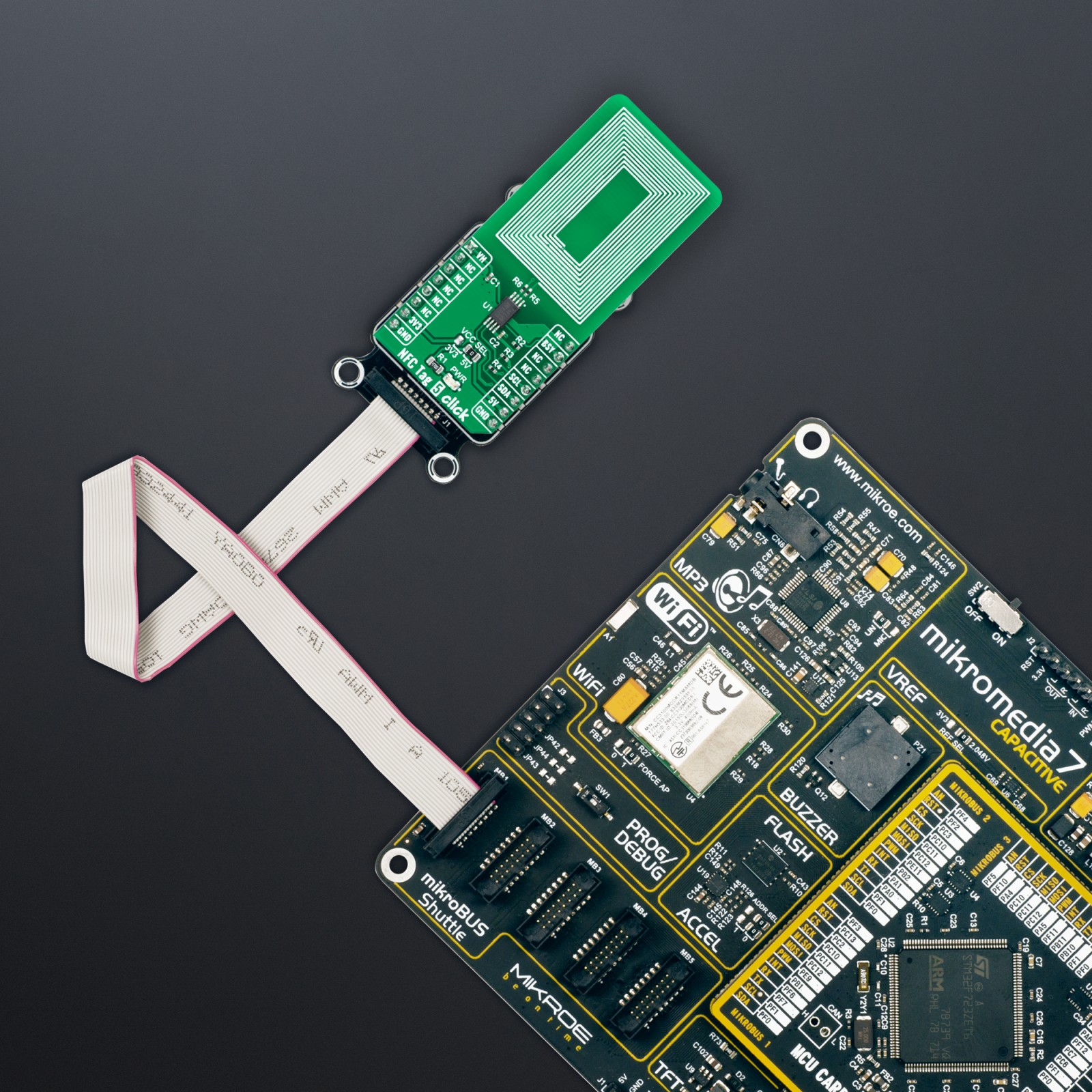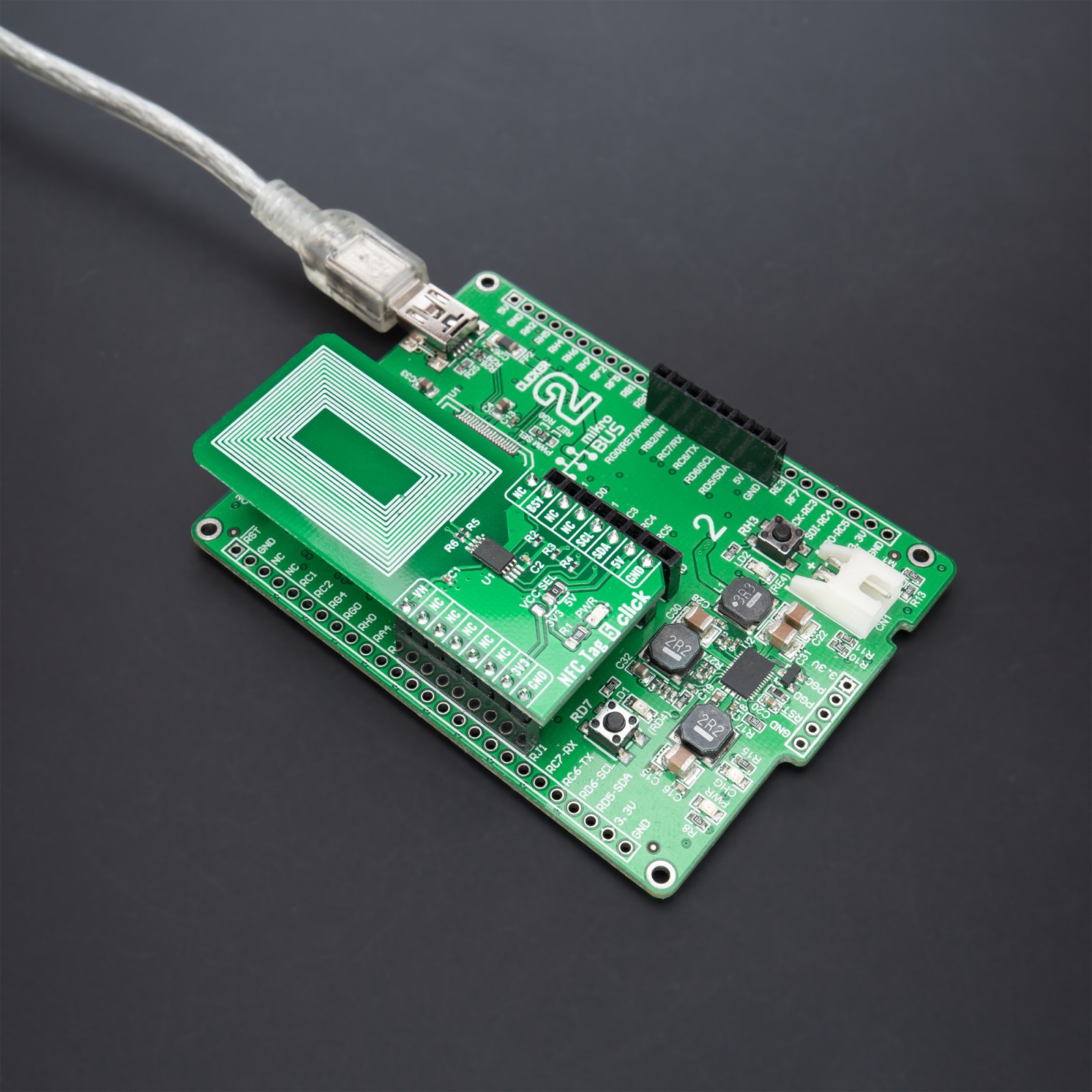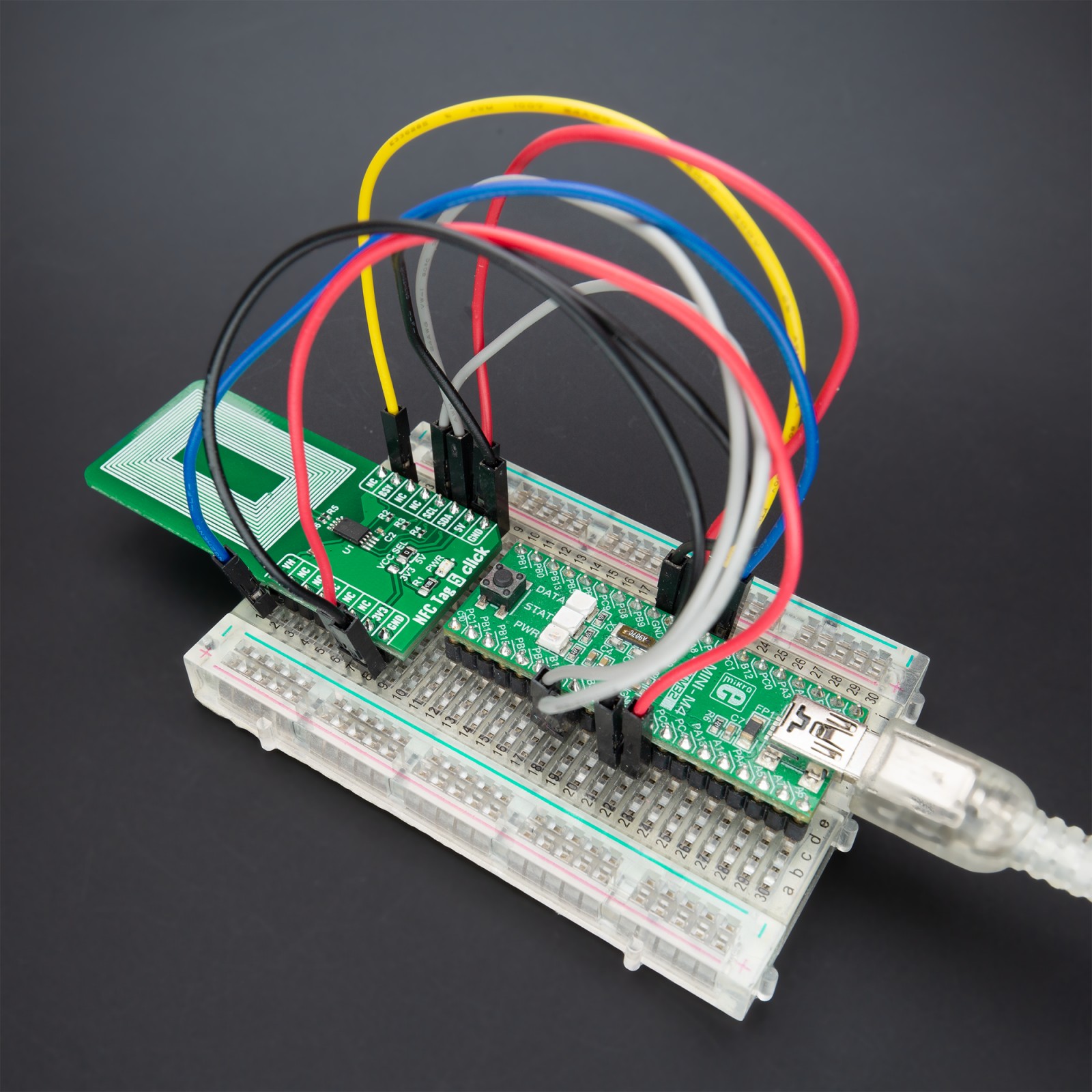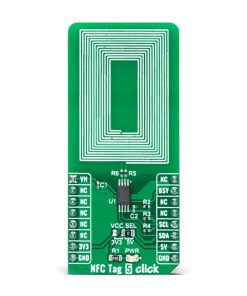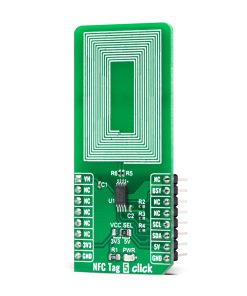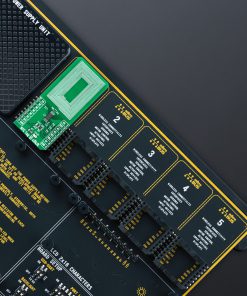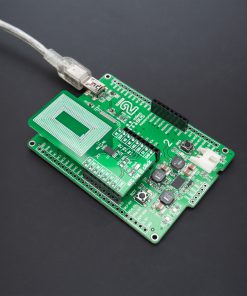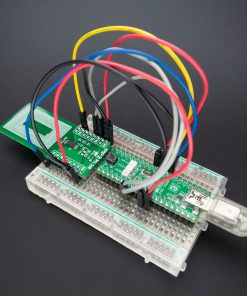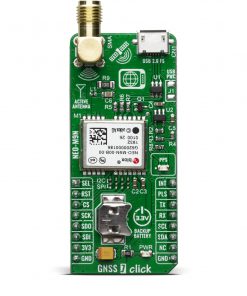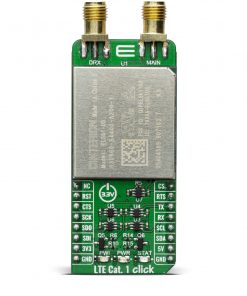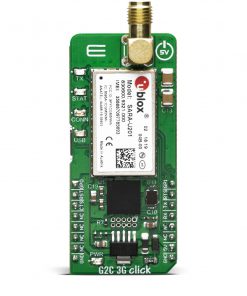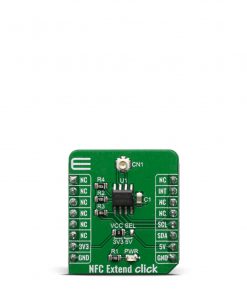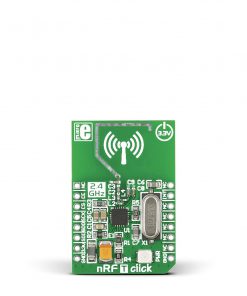NFC Tag 5 Click is a compact add-on board that contains a compact NFC tag IC. This board features the M24LR64E-R, a dynamic NFC/RFID tag IC with a dual interface 64-Kbit EEPROM from STMicroelectronics. It features an I2C interface alongside an RF contactless interface operating at 13.56MHz, organized as 8192×8 bits in the I2C mode and 2048×32 bits in the ISO 15693 and ISO 18000-3 mode 1 RF mode. The M24LR64E-R also features an energy harvesting analog output and a user-configurable digital output pin, used as an interrupt, toggling during either RF write in progress or RF busy mode. This Click board™ represents an ideal solution for rapidly integrating NFC tag technology in any custom application such as industrial or medical equipment, consumer electronics, and more.
NFC Tag 5 Click is supported by a mikroSDK compliant library, which includes functions that simplify software development. This Click board™ comes as a fully tested product, ready to be used on a system equipped with the mikroBUS™ socket.
 Proximity Click
1 × R220.00
Proximity Click
1 × R220.00 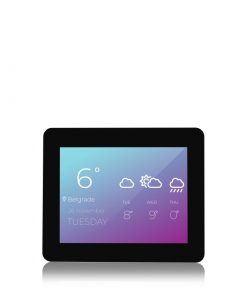 Mikromedia 3 for STM32F4 Capacitive FPI with bezel
1 × R3,350.00
Mikromedia 3 for STM32F4 Capacitive FPI with bezel
1 × R3,350.00 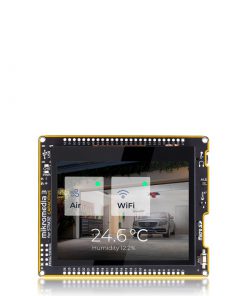 Mikromedia 3 for STM32 Capacitive
1 × R3,550.00
Mikromedia 3 for STM32 Capacitive
1 × R3,550.00 
